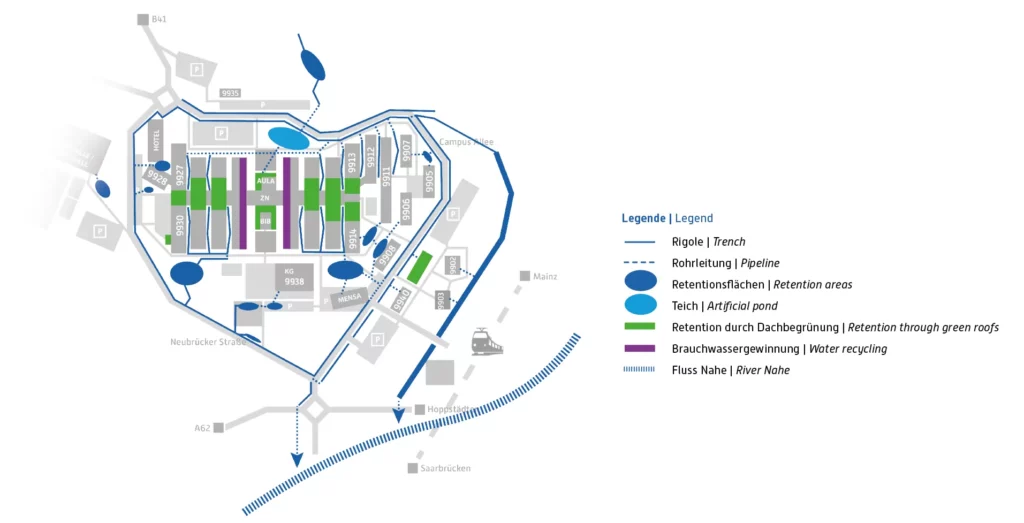Clever use and channelling of rainwater
Global water resources consist of approximately 97.5% saltwater and only about 2.5% freshwater, of which only a small fraction is accessible for human use. Freshwater is a rare and essential resource for human survival, but it is becoming increasingly scarce due to climate change impacts.
To minimize potable water consumption, the Environmental Campus is equipped with an extensive rainwater collection, storage, and retention system. The collected rainwater is used for toilet flushing, adsorption systems and wetland biotopes. Combined with additional efficiency measures, such as waterless urinals and water-saving taps and sanitary ware, this system covers around one-third of the campus‘s water needs, saving 800 to 1,000 m3 of drinking water annually.

Water collection system
The roofs of buildings 9916, 9917, 9924, and 9925 (approximately 2,000 m2) collect rainwater and direct it into two underground tanks with a total capacity of 36 m3. Before further use, the water is filtered and disinfected using UV light. The remaining roofs of the buildings channel the rainwater into troughs and trenches distributed across the campus.
Flood protection and prevention
Since rainwater infiltrates into swales and infiltration trenches or evaporates, the sewer system is not overwhelmed during heavy rainfall events, making a significant contribution to flood protection. Additionally, evaporation helps to
mitigate „heat stress“ during summer. Overflow water is directed to ponds and retention areas, creating wetlands that enhance biodiversity on the campus.
Rainwater utilisation and storage
- conserves drinking water resources.
- saves costs by reducing drinking water consumption.
- saves stormwater drainage fees.
- protects against flooding.
- is used for groundwater recharge.